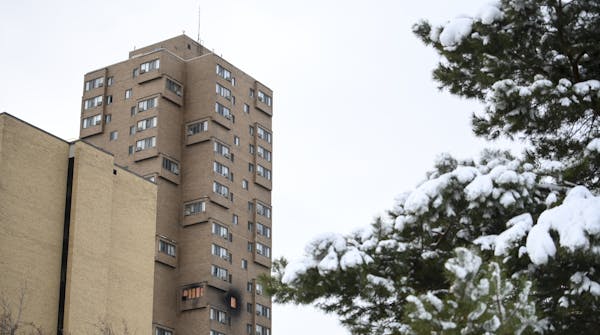Minnesota U.S. Sen. Tina Smith on Tuesday called for Congress to invest billions of dollars to address health and safety risks in public housing buildings across the nation, citing the 2019 fire in a Minneapolis high-rise apartment that killed five people.
Chairing a Senate housing subcommittee, Smith urged the U.S. Senate to support $40 billion tucked inside President Joe Biden's infrastructure plan to improve public housing.
"I hope that today's hearing will galvanize us to understand these life and safety risks and take action to protect our constituents from further tragedy," said Smith. "The federal government has a special obligation to make sure that homes supported by or funded by taxpayers are safe and free of known hazards."
Much of America's public housing stock was built after the Great Depression. Public health officials say years of disinvestment have left most buildings with major health and safety risks, including lack of sprinklers in units, mold, lead and general disrepair.
An investigation following the deadly Thanksgiving Eve fire in a Cedar Riverside public housing high-rise in Minneapolis cited a lack of sprinklers across the entire 25-story building as partly to blame for the loss of life.
Minneapolis Public Housing Authority Deputy Executive Director Jennifer Keogh, who testified at Tuesday's hearing, said the authority has installed sprinklers in 16 of its buildings and has plans to complete retrofitting another 10 buildings this year.
But speeding up that project has come at the expense of other deferred maintenance.
"The result of prioritizing sprinkler work is that other critical needs go unmet," said Keogh, who added there are $164 million in total estimated capital repairs needed across the authority's 6,000 units.
Smith and Minnesota Sen. Amy Klobuchar, both Democrats, are sponsoring a bill to set up a $25 million competitive grant program to help retrofit public housing buildings with sprinkler systems.
The health and safety issues in public housing disproportionately affect low-income residents and communities of color, said Smith. Black children are disproportionately harmed by lead exposure in homes.
Eighty percent of residents in public housing units in Minneapolis identify as people of color, and 60% of residents in the city's high-rise buildings are elderly or living with a disability, making it even harder to evacuate in the event of a fire.
Keogh said the investments being discussed are a "once-in-lifetime opportunity" to address racial disparities in cities like Minneapolis, which were segregated through policies such as redlining and racial covenants.
"We see that living out today in our city that is incredibly segregated, and the racial disparities along those lines are deep," she said. "If we want to be a thriving community, we know we need to make better investments in the city of Minneapolis, as well as within our region."
Briana Bierschbach • 651-925-5042
Twitter: @bbierschbach
